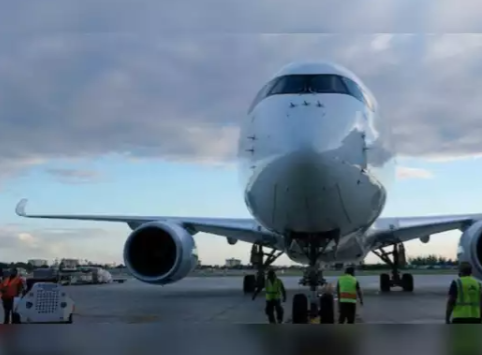Indian aviation, a case of air safety at a discount (GS Paper 2 – Governance)

Context
- The article addresses concerning safety issues in Indian aviation, including the lack of implementation of safety measures at Karipur Airport and the deferral of revised Flight Duty Time Limitations (FDTL) regulations.
- It highlights the potential conflict between prioritizing passenger safety and accommodating commercial interests within the industry.
Safety Issues at Karipur Airport:
- Union Minister for Civil Aviation, Jyotiraditya Scindia, highlighted safety concerns at Karipur Airport due to the absence of Runway End Safety Area, despite recommendations by the Aircraft Accident Investigation Bureau (AAIB) post a 2020 air crash.
- The Minister warned of potential runway length curtailment if the safety measures weren’t implemented by August 1, 2023.
- As of April 2024, no action has been taken, and flights continue without restrictions, raising doubts about prioritizing safety.
Revised Flight Duty Time Limitations (FDTL) Regulations:
- In January 2024, Minister Scindia announced revised FDTL Regulations to address pilot fatigue, including increased rest periods and regular fatigue reports.
- However, airline owners expressed concerns about needing additional crew to meet these regulations, leading to a deferral of the implementation deadline by DGCA in March 2024.
Safety vs. Commercial Priorities:
- The inconsistency between emphasising safety and accommodating commercial interests prompts questions regarding the true priority of passenger safety.
- Lack of implementation of safety measures and deferral of regulations suggest a potential bias towards commercial concerns over safety.
International Standards and Practices:
- International Civil Aviation Organisation (ICAO) mandates the Fatigue Risk Management System (FRMS) due to the recognized dangers of fatigue-related incidents.
- Countries like Japan, Singapore, and the UK prioritize fatigue management with measures like regular rest periods and augmented rest for long-haul flights.
Human Factor and Financial Stress:
- Neglecting the human factor in airline operations, particularly pilot well-being, poses significant risks.
- Instances of financial stress among pilots, as seen in past accidents, highlight the need for holistic consideration of pilots’ mental and financial health.
- Reports of pressure on pilots regarding contract changes raise concerns about their mental state during flight operations.
Proposed Solutions:
- Adoption of ICAO Annex 1 Standard to recognize foreign licenses could address pilot shortages by attracting experienced Indian captains working abroad.
- Utilization of retired pilots for simulator training could ease training requirements and release more pilots for active flying duties.
Need for Reform and Transparency:
- Outdated regulations and systemic corruption hinder progress in Indian aviation.
- Tatas, in their merger of airlines, should prioritise the human factor and transparency to ensure a trouble-free and world-class airline system.
Conclusion:
- Indian aviation faces significant safety challenges stemming from inadequate infrastructure, regulatory issues, and commercial pressures.
- Addressing these challenges requires a comprehensive approach that prioritizes safety, addresses pilot well-being, and fosters transparency and reform within the industry.


